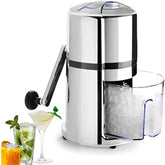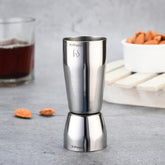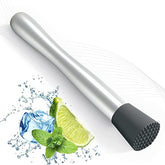Cutlery vs Crockery: Understanding the Key Differences for Your Kitchen
When organizing a kitchen or upgrading dining essentials, the terms "cutlery and crockery" often appear together, yet many people are confused about how one differs from the other. Although both are essential components of any dining setup, they serve completely different purposes and include different categories of dining equipment. Understanding these differences helps you make informed purchases, set the right table, and communicate clearly when shopping for kitchen essentials.
For Indian families embracing modern dining practices while still adhering to traditional customs, clarity about cutlery and crockery becomes especially important. Whether you're a young couple decorating your first home, renovating old tableware, or simply looking to understand the correct terminology, this comprehensive guide will clarify the key differences between these basic kitchen categories.
Cutlery Meaning: Defining the Essential Eating Tools

Let's start with the cutlery meaning to establish a clear foundation. The definition of cutlery refers to the implements used for eating, serving, and preparing food—primarily metal utensils designed for cutting, scooping, and piercing. In its broadest sense, cutlery meaning encompasses any tool used in the process of consuming meals, though it most commonly refers to eating utensils made from stainless steel or other metals.
The definition of cutlery has evolved over centuries, but today it specifically includes:
-
Eating Implements: Spoons, forks, and knives used by diners
-
Serving Tools: Larger utensils for transferring food from serving dishes to plates
-
Specialized Utensils: Purpose-specific tools like soup spoons, dessert forks, and salad servers
Understanding the cutlery meaning helps distinguish it clearly from crockery, which refers to an entirely different category of dining essentials. While cutlery represents the tools you eat with, crockery represents the vessels you eat from.
What is Crockery? Understanding the Distinction
Crockery refers to ceramic or porcelain tableware used for serving and consuming food. Unlike cutlery and crockery, which work together to create complete dining setups, they represent fundamentally different categories. Crockery includes:
-
Plates: Dinner plates, side plates, and serving platters
-
Bowls: Soup bowls, cereal bowls, and serving bowls
-
Cups and Mugs: Tea cups, coffee mugs, and drinking vessels
-
Serving Dishes: Tureens, vegetable bowls, and presentation pieces
While the definition of cutlery emphasizes functional tools for eating, crockery emphasizes vessels for holding and presenting food. Together, cutlery and crockery form the complete foundation of any dining experience.
Types of Cutlery: A Comprehensive Overview
Understanding the various types of cutlery helps you build a functional, versatile collection suited to your dining needs. Modern cutlery collections typically include:
Basic Eating Cutlery:
-
Spoons: Teaspoons, tablespoons, soup spoons, and dessert spoons
-
Forks: Dinner forks, dessert forks, and salad forks
-
Knives: Dinner knives, butter knives, and steak knives
Serving Cutlery:
-
Serving Spoons: Large spoons for transferring main dishes
-
Serving Forks: For holding meat while carving or serving
-
Ladles: Deep-bowled tools for soups and liquids
-
Salad Servers: Paired spoon and fork for tossing and serving salads
Specialized Types of Cutlery:
-
Coffee Spoons: Petite spoons for espresso and demitasse service
-
Ice Cream Spoons: Flat-bowled spoons designed for frozen desserts
-
Fish Knives and Forks: Specifically shaped for seafood dishes
-
Cake Servers: Wide, flat implements for cutting and serving desserts
Each type within the broader definition of cutlery serves specific purposes, making certain dining tasks easier and more elegant. Quality cutlery collections include various types to accommodate different dishes and dining scenarios.
Key Differences Between Cutlery and Crockery
Now that we've explored the cutlery meaning and types of cutlery, let's clearly distinguish cutlery and crockery:
Material Composition:
-
Cutlery: Primarily made from stainless steel, silver, or other metals
-
Crockery: Made from ceramic, porcelain, bone china, or stoneware
Primary Function:
-
Cutlery: Tools for eating, cutting, scooping, and serving food
-
Crockery: Vessels for holding, presenting, and serving food
Durability Characteristics:
-
Cutlery: Virtually unbreakable, resistant to chips and cracks
-
Crockery: Can chip, crack, or break if dropped or mishandled
Maintenance Requirements:
-
Cutlery: Dishwasher safe, requires polishing to maintain shine
-
Crockery: May require gentle handling; some pieces need hand washing
Longevity:
-
Cutlery: Lasts decades with proper care, rarely needs replacement
-
Crockery: More susceptible to damage, may need periodic replacement
Why Both Matter for Complete Dining Setup
While distinct, cutlery and crockery work in harmony to create complete, functional dining experiences. You cannot effectively serve or enjoy meals with only one category—both are essential:
Coordinated Aesthetics: Matching or complementary cutlery and crockery create visually cohesive table settings that enhance dining ambiance.
Functional Completeness: Proper cutlery allows you to eat what's served on crockery comfortably and appropriately.
Versatility Across Occasions: Different types of cutlery pair with various crockery styles for casual family meals, formal dinners, or festive celebrations.
Cultural Adaptation: Indian households benefit from having both traditional crockery (like thalis and katoris) and modern cutlery for diverse dining preferences.
Making Smart Purchasing Decisions
When shopping for cutlery and crockery, consider purchasing both categories thoughtfully:
For Cutlery:
-
Invest in comprehensive sets covering multiple types of cutlery
-
Choose high-grade stainless steel for longevity
-
Consider ergonomic designs for comfortable handling
-
Select timeless patterns that won't feel dated
For Crockery:
-
Choose durable materials like porcelain or stoneware
-
Consider microwave and dishwasher compatibility
-
Select neutral colors that coordinate with various cutlery styles
-
Purchase extra pieces to accommodate breakage
Understanding the definition of cutlery vs crockery, recognizing the different types of cutlery, and understanding how cutlery and crockery work together enables you to create dining setups that will serve your home beautifully for years. Whether you're setting your first table or upgrading an existing collection, understanding these basic differences ensures a wise investment in kitchen essentials that make every meal even more delicious.
Frequently Asked Questions
Q1: What is the main difference between cutlery and crockery?
A: Cutlery refers to utensils used for eating and serving food, such as knives, forks, spoons, and serving sets, typically made of stainless steel or silver. Crockery, on the other hand, includes utensils and containers used for eating and serving food, such as plates, bowls, cups, and saucers, typically made of ceramic, porcelain, or bone china.
Q2: Can I use the same material for both cutlery and crockery?
A: No, cutlery and crockery are made from different materials suited to their specific functions. Cutlery is typically made from metals like stainless steel, silver, or gold-plated steel for durability and cutting efficiency. Crockery is made from ceramics, porcelain, bone china, or stoneware, which are better suited for holding food and withstanding heat.
Q3: Which is more essential for a new kitchen setup - cutlery or crockery?
A: Both are equally essential for a functional kitchen. You need crockery (plates, bowls, cups) to serve and eat food, and cutlery (spoons, forks, knives) to consume it. For a basic setup, start with a 6-piece dinnerware set for crockery and a 24-piece cutlery set that includes all essential utensils for daily use.
Q4: How do I care for cutlery differently than crockery?
A: Cutlery needs to be polished regularly to maintain its shine, dried immediately after washing to avoid water spots, and stored in a dry place to prevent tarnishing. Crockery should be handled gently to prevent breakage, stored carefully with protective layers, and some types of crockery (such as bone china) may need to be hand-washed rather than used in the dishwasher.
Q5: Is cutlery or crockery more expensive to replace?
A: This varies depending on the material and quality. Simple stainless steel cutlery sets are usually affordable and long-lasting, while premium gold- or silver-plated cutlery can be expensive. Similarly, everyday ceramic dinnerware is budget-friendly, but fine bone china or porcelain dinnerware can be expensive. Premium cutlery usually lasts longer than delicate cutlery, as delicate cutlery is more likely to break..
Q6: Can I mix and match cutlery and crockery styles?
A: Yes, you can mix and match, but for a cohesive table setting, it's best to coordinate styles. For formal dining, pair elegant gold-plated cutlery with fine porcelain crockery. For casual settings, modern stainless steel cutlery works well with colorful ceramic plates. The key is maintaining a balanced aesthetic that reflects your dining occasion.
Q7: What cutlery and crockery items do I need for formal dining?
A: For formal dining, you'll need: Cutlery - dinner knives, dinner forks, salad forks, soup spoons, dessert spoons, and serving utensils. Crockery - dinner plates, salad plates, soup bowls, bread plates, cups, and saucers. Premium materials like gold-plated cutlery and bone china crockery elevate the dining experience.
Q8: Are there dishwasher-safe options for both cutlery and crockery?
A: Yes, most modern stainless steel cutlery is dishwasher safe, though gold or silver-plated pieces should be hand-washed to preserve the finish. For crockery, many ceramic and porcelain items are dishwasher safe, but delicate bone china, hand-painted pieces, or items with metallic accents should be washed by hand to prevent damage.
Q9: How long does cutlery last compared to crockery?
A: Quality stainless steel cutlery can last 15-20 years or even a lifetime with proper care, as metal doesn't break easily. Crockery has a shorter lifespan, typically 5-10 years for everyday use, as ceramic and porcelain items are prone to chipping, cracking, or breaking from drops and impacts.
Q10: Should I invest more in premium cutlery or premium crockery?
A: Invest in premium cutlery first, as it lasts longer, is used daily, and quality pieces resist tarnishing and maintain their appearance for decades. Good stainless steel or gold-plated cutlery is a worthwhile investment. You can start with mid-range crockery and upgrade gradually, as it's more susceptible to damage and may need replacement over time.









